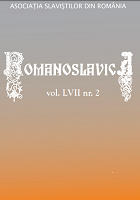FIGURI FEMININE ÎN PROZA LUI TARAS ȘEVCENKO
Images of Women in Taras Shevchenko’s Prose
Author(s): Diana TeteanSubject(s): Gender Studies, Ukrainian Literature, Sociology of Culture, Theory of Literature
Published by: Asociația Slaviștilor din România
Keywords: Shevchenko; the feminine ideal; myth; prose; Najmichka (The Servant Girl); Knjaginja (The Princess);
Summary/Abstract: While entire volumes of literary studies have been dedicated to Taras Shevchenko’s poetic creation, his prose remained a long time in obscurity. The Cinderella status of Shevchenko’s prose is largely due to Kuliş Panteleimon’s authority, one of the major representatives of Ukrainian education, who deemed that the publication of these works, rather weak in his opinion, could only dent Shevchenko’s reputation as national poet. The publication of Shevchenko’s prose work with great delay and with numerous errors and deviations from the original text was the reason why the public failed to appreciate its true worth. The democratic attribute of the great Kobzar’s artistic accomplishment, also present in his prose, lies in the manner in which he renders the women’s grueling fate at that time in an attempt to change the prejudiced perception of most of his contemporaries. The writer creates his own feminine prototype, based not so much on physical beauty, but primarily on inner values, as the woman was the very symbol of love and endurance and justifying in this way her supreme functions in society, those of mother and wife. The present paper analyzes the female characters from the short stories - Najmichka (The Servant Girl) and Knjaginja (The Princess), focusing on the manner in which they are integrated in the Ukrainian customs and rituals on one hand, and in mythology and universal literature, on the other. Shevchenko, a monumental talent, is a representative of many types of transgression: social, human, artistic and cultural. Thus, from a mere serf, he became a decisive poet and writer who marked the destiny of his own country, continuously fighting to endure and overcome himself. His talent does not limit only to the literary field, but he proves his artistry also in the plastic arts, seeking to erase the boundaries that segregate the arts between them and aiming towards a total form of art. In addition to writing both in Ukrainian and Russian, restating in his works the common origin of the two languages and cultures, Shevchenko also reached, through his work, to a point where the boundaries between cultures are superfluous and from where the universality of artistic creation begins.
Journal: Romanoslavica
- Issue Year: LVII/2021
- Issue No: 2
- Page Range: 83-95
- Page Count: 13
- Language: Romanian

